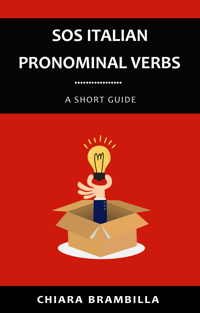
Learning Italian can be a fascinating journey, full of unexpected surprises. One of the most curious linguistic phenomena you’ll encounter is that of contronyms —words that carry opposite meanings depending on the context. While this may seem confusing at first, understanding these terms can actually deepen your command of the language and sharpen your interpretative skills.
In this article, I’ll explore some of the most common contronyms in Italian, offer examples with English translations, and help you navigate this quirky aspect of the language with confidence.
Common Contronyms in Italian
As I mentioned above, contronyms are words that, within different contexts, can mean one thing and also its opposite. Let’s use English to make an example. In English the word “sanction” means both to allow and to punish according to the context, right? The same happens in Italian.
Now, let’s take a look at some of the most commonly used contronyms in Italian, along with practical examples and translations.
1. Ospite – Host or Guest?
This is one of the most famous contronyms in Italian.
- L’ospite ha preparato la cena per tutti.
(The host prepared dinner for everyone.) - Siamo arrivati e l’ospite ci ha accolti con un sorriso.
(We arrived and the guest welcomed us with a smile.)
The context determines whether ospite refers to the person receiving or the person being received.
2. Affittare – To Rent Out or To Rent?
- Voglio affittare la mia casa per l’estate.
(I want to rent out my house for the summer.) - Abbiamo affittato un appartamento per le vacanze.
(We rented an apartment for the holidays.)
Whether you’re giving or taking a rental, the word affittare works both ways.
3. Tirare – To Pull or To Throw?
- Tira la corda!
(Pull the rope!) - Ha tirato la palla fortissimo.
(He threw the ball really hard.)
This verb can describe either attracting something toward you or propelling it away.
4. Spolverare – To Dust Off or To Sprinkle?
- Ho spolverato i mobili del salotto.
(I dusted the furniture in the living room.) - Ho spolverato il dolce con lo zucchero a velo.
(I sprinkled the dessert with powdered sugar.)
So, the same verb applies to removing or adding a fine powder!
5. Feriale – Workday or Holiday?
- I mezzi pubblici seguono l’orario feriale.
(Public transport follows the weekday schedule.) - Il periodo feriale sarà dal 10 al 20 agosto.
(The vacation period will be from August 10 to 20.)
As always, context helps distinguish between working days and vacation time.
6. Pauroso – Fearful or Fear-Inducing?
- È un bambino molto pauroso.
(He’s a very fearful child.) - Quel film è davvero pauroso!
(That movie is really scary!)
One describes the person who feels fear, the other the thing that causes it.
Why Do Contronyms Matter?
Recognizing contronyms in Italian is not just a vocabulary challenge—it’s a cultural and contextual lesson. These words teach you to:
- Pay close attention to sentence structure and surrounding words.
- Develop better intuition for meaning based on tone and situation.
- Appreciate the richness and flexibility of the Italian language.
Plus, understanding these words will help you avoid embarrassing misinterpretations during conversations!
How to Master Contronyms in Italian
Here are some practical tips:
- Read Often – Look for these words in novels, news articles, and subtitles.
- Practice with Native Speakers – Context will become clearer as you engage in real conversation.
- Keep a Personal List – Create your own collection of contronyms and examples.
- Use Flashcards – Add both meanings with example sentences.
- Ask Questions – When unsure, ask a teacher or native speaker what a word means in that sentence.
Have you encountered any contronyms in your Italian learning journey? Let me know your favorites!
Credits
Original image by Copilot





 Improve Your Italian Pronunciation with Five Tongue Twisters
Improve Your Italian Pronunciation with Five Tongue Twisters

